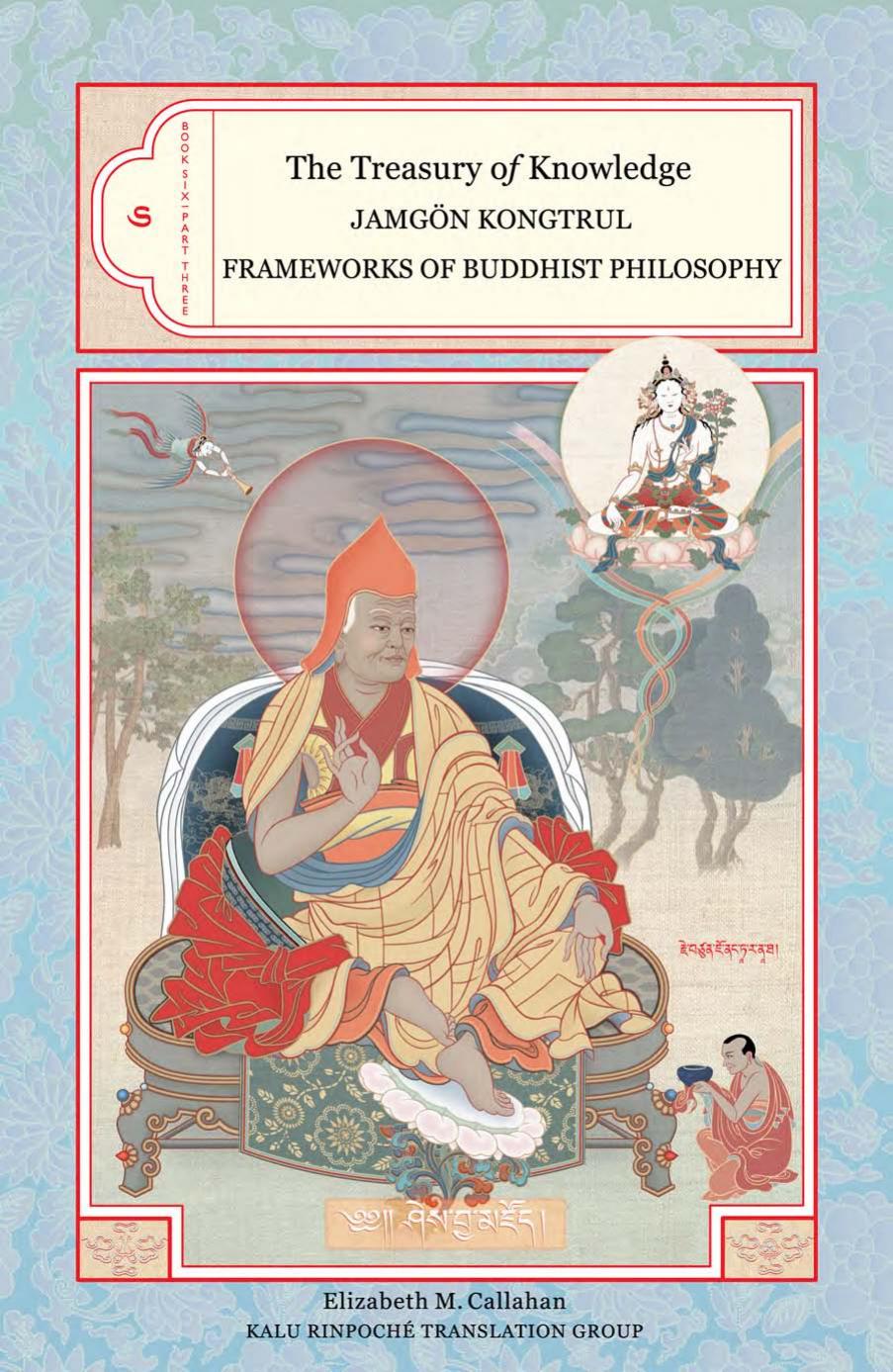The Treasury of Knowledge, Book 6, Part 3: Frameworks of Buddhist Philosophy by Jamgon Kongtrul Lodro Taye

Author:Jamgon Kongtrul Lodro Taye
Language: eng
Format: azw3, pdf
ISBN: 1559392770
Publisher: Snow Lion Publications
Published: 2007-10-25T00:00:00+00:00
This natural luminosity is distinguished by great bliss. It is emptiness (the letter E) and great compassion (the letter VAnn).875 It is primordial wisdom, which is the unification of clarity and emptiness, bliss and emptiness, and so forth. Since this subject is explained clearly and extensively in the Five Stages,876 the Three Commentaries by Bodhisattvas,877 and other texts, those texts should be consulted.
Here I will summarize [the key points of] a shared style of explanation. There are two points: Madhyamaka as it relates to the generation stage and Madhyamaka as it relates to the completion stage.878
MADHYAMAKA AS IT RELATES TO THE GENERATION STAGE
This has two modes:
(1) the mode [relating to] the ground for the creation of the deities; and
(2) the mode for the created deity to arise without conceptual elaborations.
(1) The Shentong mode of explanation [applies to how the deities] are created within nondual primordial wisdom, because [it clarifies how] the seed syllables and emblems that arise within emptiness are not beyond the primordial wisdom of the dharmadhatu.
(2) The way those created deities arise without conceptual elaborations is first ascertained by [being aware of the deities'] clarity and emptiness. Their clarity is the vivid appearance of the characteristics and attributes of the mandalas of deities (the support and supported).879 Their emptiness is that we do not cling to them in any way nor do we conceptualize them as anything, because if we fixate on the characteristics of those vivid appearances we will not transcend samsara.
The mere cessation of concepts may be considered nirvana, but it is not the transcendence of all flaws, because one has not reached the state of unification.880 Therefore, we practice by unifying [clarity and emptiness]: while the appearances of the deities are vivid, they are empty; while they are empty, they appear clearly. This is the unification of clarity and emptiness. In the key instructions, it is called "the inseparability of samsara and nirvana." In this context, objects manifest as the unification of appearances and emptiness, and cognition as the unification of clarity and emptiness. During the subsequent state of attainment,881 which occurs when we arise from that [samadhi], we maintain the pride of being the deity and, therefore, we are engaged in a yoga with characteristics.
Download
The Treasury of Knowledge, Book 6, Part 3: Frameworks of Buddhist Philosophy by Jamgon Kongtrul Lodro Taye.pdf
This site does not store any files on its server. We only index and link to content provided by other sites. Please contact the content providers to delete copyright contents if any and email us, we'll remove relevant links or contents immediately.
The Way of Zen by Alan W. Watts(6513)
Ego Is the Enemy by Ryan Holiday(5298)
The Art of Happiness by The Dalai Lama(4064)
The Book of Joy by Dalai Lama(3904)
Why Buddhism is True by Robert Wright(3405)
Spark Joy by Marie Kondo(3253)
Shift into Freedom by Loch Kelly(3138)
Happiness by Matthieu Ricard(2996)
A Monk's Guide to a Clean House and Mind by Shoukei Matsumoto(2870)
The Lost Art of Good Conversation by Sakyong Mipham(2578)
The Meaning of the Library by unknow(2508)
The Unfettered Mind: Writings from a Zen Master to a Master Swordsman by Takuan Soho(2249)
The Third Eye by T. Lobsang Rampa(2226)
Anthology by T J(2164)
Red Shambhala by Andrei Znamenski(2154)
The Diamond Cutter by Geshe Michael Roach(2022)
Thoughts Without A Thinker: Psychotherapy from a Buddhist Perspective by Epstein Mark(1964)
Twilight of Idols and Anti-Christ by Friedrich Nietzsche(1853)
Advice Not Given by Mark Epstein(1839)
